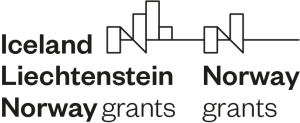Amenge in Romani means “us”
National Design Award-winning project combines participatory design with inclusion
Amenge.projekt was part of the Interdisciplinary Online Lab on Inclusive Culture event organized by Creative Industry Košice in collaboration with Urban Space Lab as part of the Slovak-Norwegian Cultural Matching initiative supported by Iceland, Liechtenstein, and Norway through the EEA and Norway Grants.
The event was attended by: Zuzana Zmateková, textile designer and author of Amenge.projekt, Laurie Vestøl from Urban Space Lab, Barbora Andor Tóthová, co-founder of Kino Úsmev and Arild Berg, art mentor and professor at OsloMet.
What is the appropriation?
The appropriation of minority culture is a term we encounter in pop culture on various occasions. Roma textiles are no exception. The appropriation of Roma culture, its visual appeal, and stereotyping stands in opposition to the marginalization, racial intolerance, and segregation of the Roma minority.
Participatory design
Participatory design is one of the ways to approach this issue more sensitively. Amenge.project is now in its second year of opening an intercultural dialogue. It presents a collection of textile prints created in collaboration with Roma children and youth. The purpose of its creation was to engage children in artistic collaboration and, at the same time, to offer them a different perspective on the problems they commonly encounter. Through their lens to present the Roma experience, visual perception, personal preferences, adventures, and ideas.

Photo: Tibor Czitó 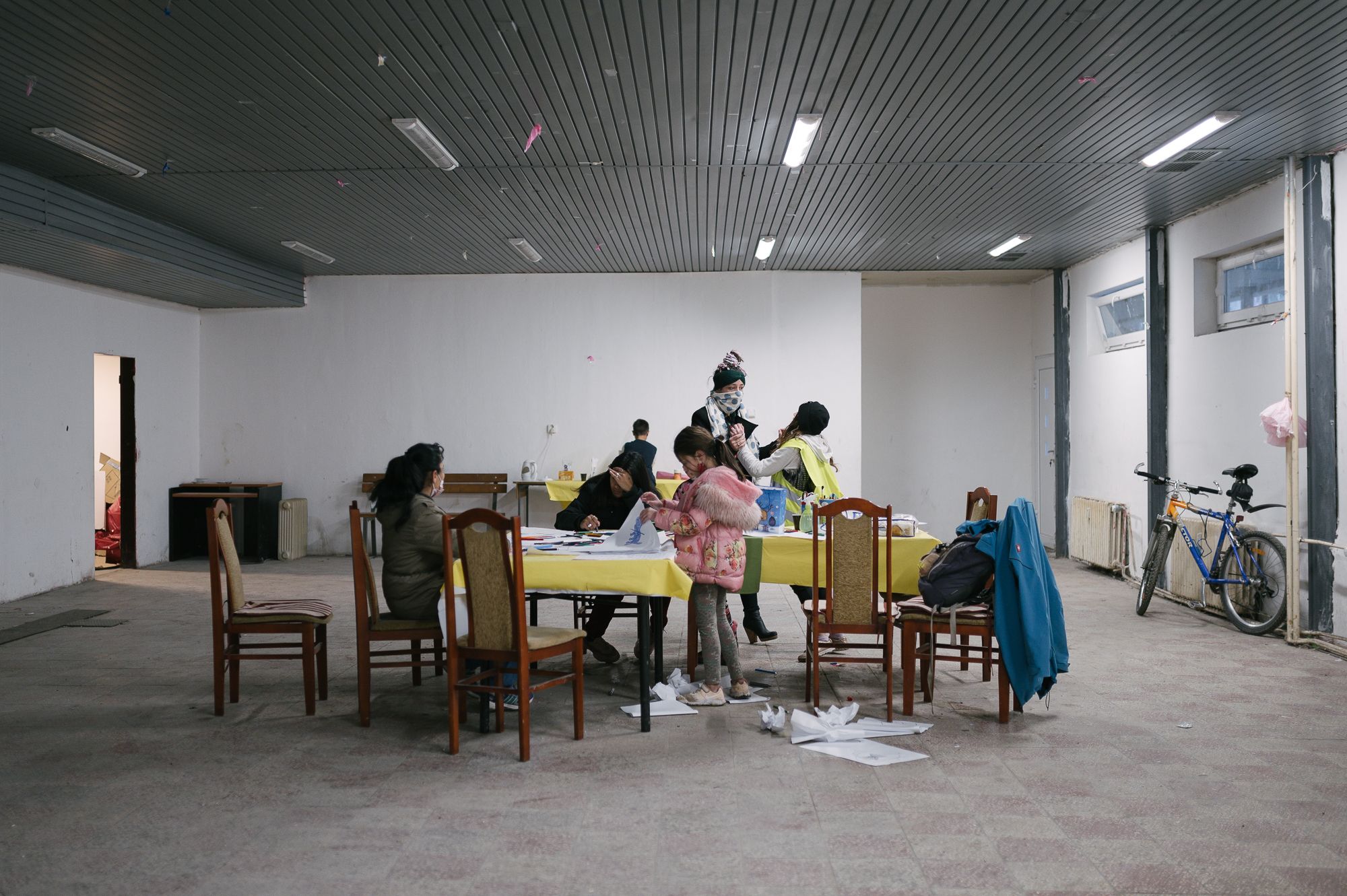
Photo: Tibor Czitó
What would a Roma textile designed by Roma look like?
This reflection inspired textile designer and researcher Zuzana Zmateková and textile artist Henrieta Tholt, who decided to research Roma textiles more in-depth. The insufficient amount of literature, historical sources, and artefacts further deepened their interest in the subject. They decided to find some of the answers practically – through participatory research.
Authentic design collection
The project started in 2020 when the designers enlisted the help of Petra Kurutzová from ETP Slovakia. She facilitated and organised the first workshops with Roma children living in Lunik IX in Košice. During the workshops, they looked at topics such as nature, home, fashion, and music together with the children through various exercises. As a result, they chose two themes – home and nature, which were translated into the designs of the final collection. Zuzana Zmateková also tried to keep their childlike authenticity with the designs – original handwriting, watercolour patches, or uncertain pencil strokes.
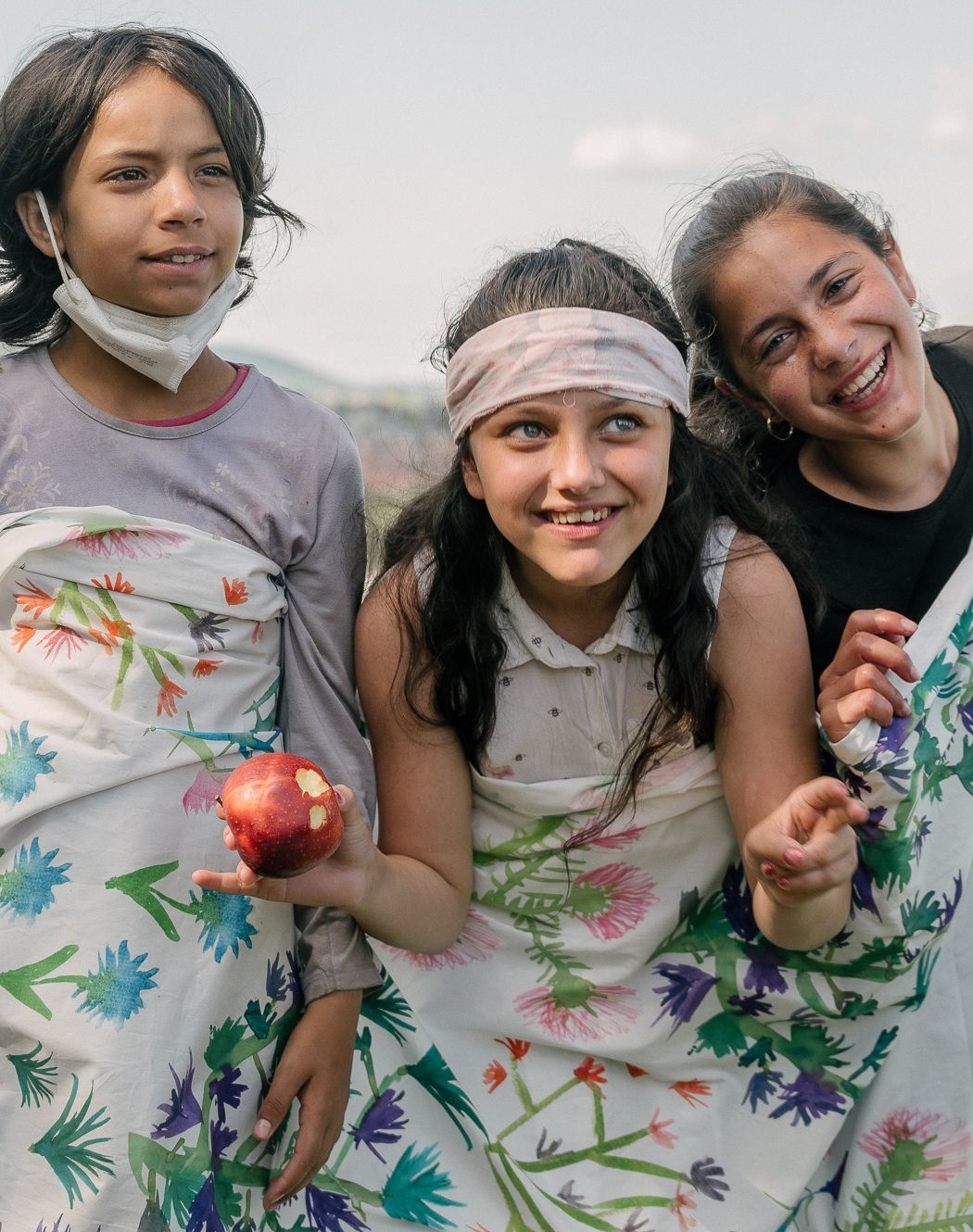
Photo: Tibor Czitó 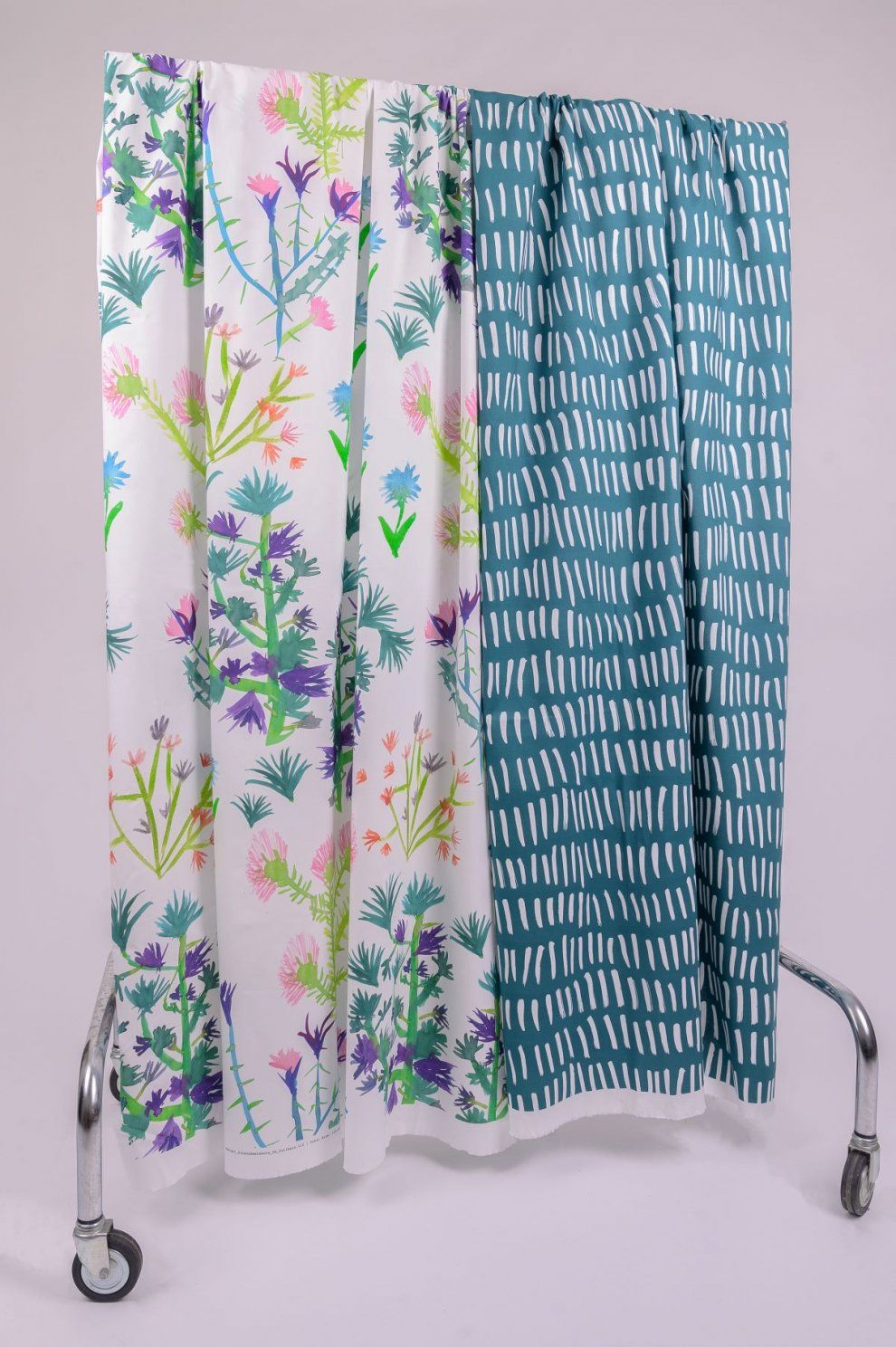
Photo: Tibor Czitó
The Amenge project headed to the gallery
In its continuation, the collective around the Amenge project is expanding with Monika Pádejová. She is the curator of an exhibition of the resulting textiles featured in The Extinction of the Planet at the East Slovak Gallery in the summer of 2021. This exhibition included an inclusive workshop in the gallery’s courtyard, where all visitors could participate in the creation of the work alongside the participants of the workshops from Lunik IX.
After the exhibition, the textiles were donated to ETP Slovakia for use according to their needs. For example, they were also on the stage at Lunik IX on the occasion of Pope Francis’ visit last September. „A powerful moment not only for us but also for one of the workshop participants, Melisa, was when she saw her drawing on the banner of the stage built at Luník IX on the occasion of Pope Francis’ visit. Melisa took a photo of the whole thing from the window of her apartment,” says Monika Pádejová.
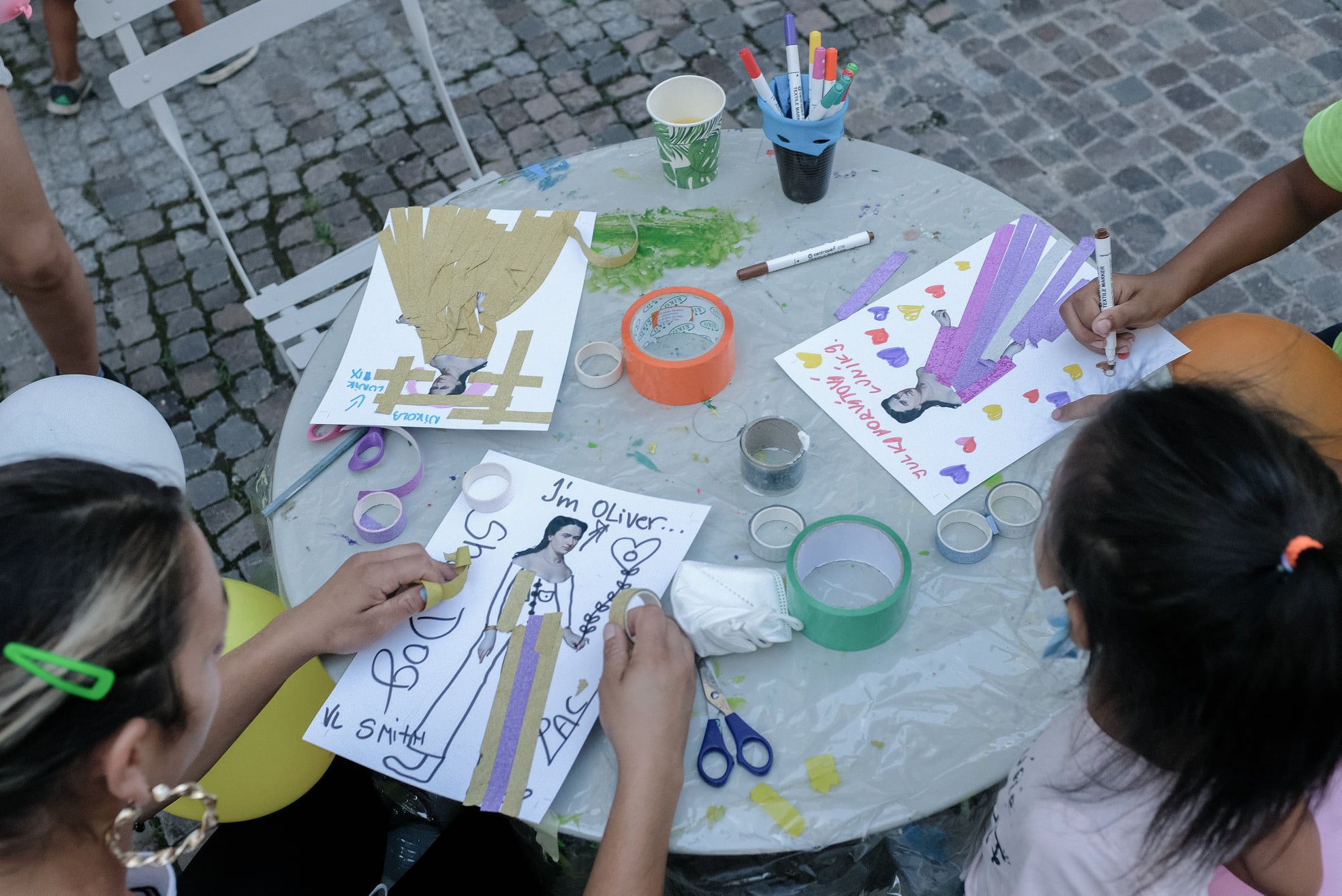
Inclusive workshop in the VSG courtyard, Photo: Alexandra Papcunová 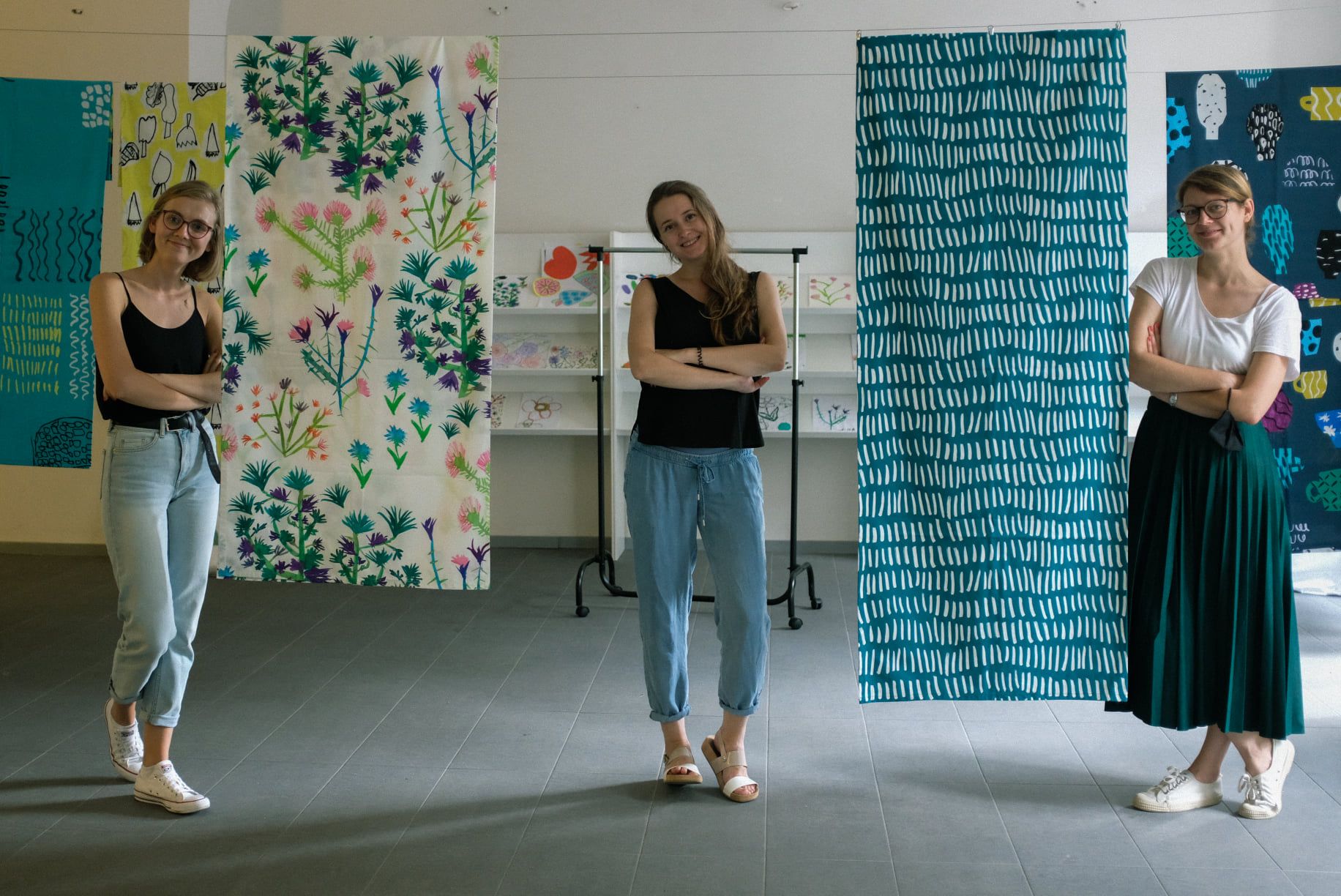
From left: Monika Pádejová, Henrieta Tholt and Petra Filipiaková, Photo: Alexandra Papcunová
Visiting an exhibition or botanical garden
The East Slovak Gallery has been a partner of the project since last year, thanks to which the team has expanded to include gallery educator Petra Filipiakova. Workshops from Luník IX migrate to various places in Košice, which some of us know well, but for the children from Luník IX are often a complete novelty.
„I had the opportunity to see how the children reacted to the exhibition and the photographs from the first project, which was also an experience for me. They had a great time and genuinely enjoyed getting to know their drawings. It was also so energetic in all the meetings I had with the children. They oozed with a beautiful childlike and sincere joy in creating and the games we did together,” says Petra about the course of the workshops she conducted both inside and outside the gallery in 2021. For the first time, the children visited the gallery space or the botanical garden, using microscopes to observe the cells of leaves and thus draw inspiration for creating new illustrations. The results were also the basis for a new collection called Appropriation.
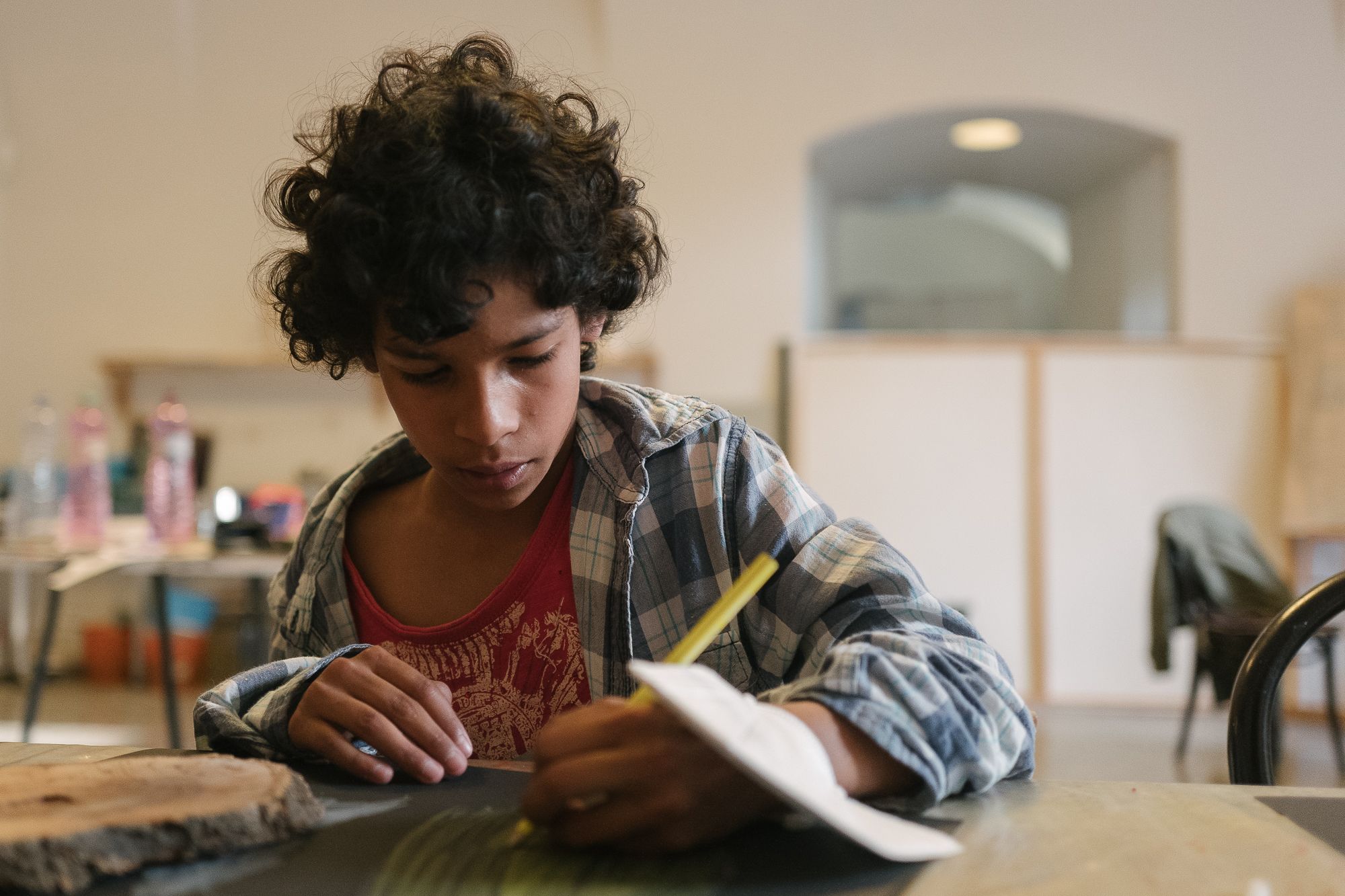
Workshop in VSG studio, Photo: Tibor Czitó 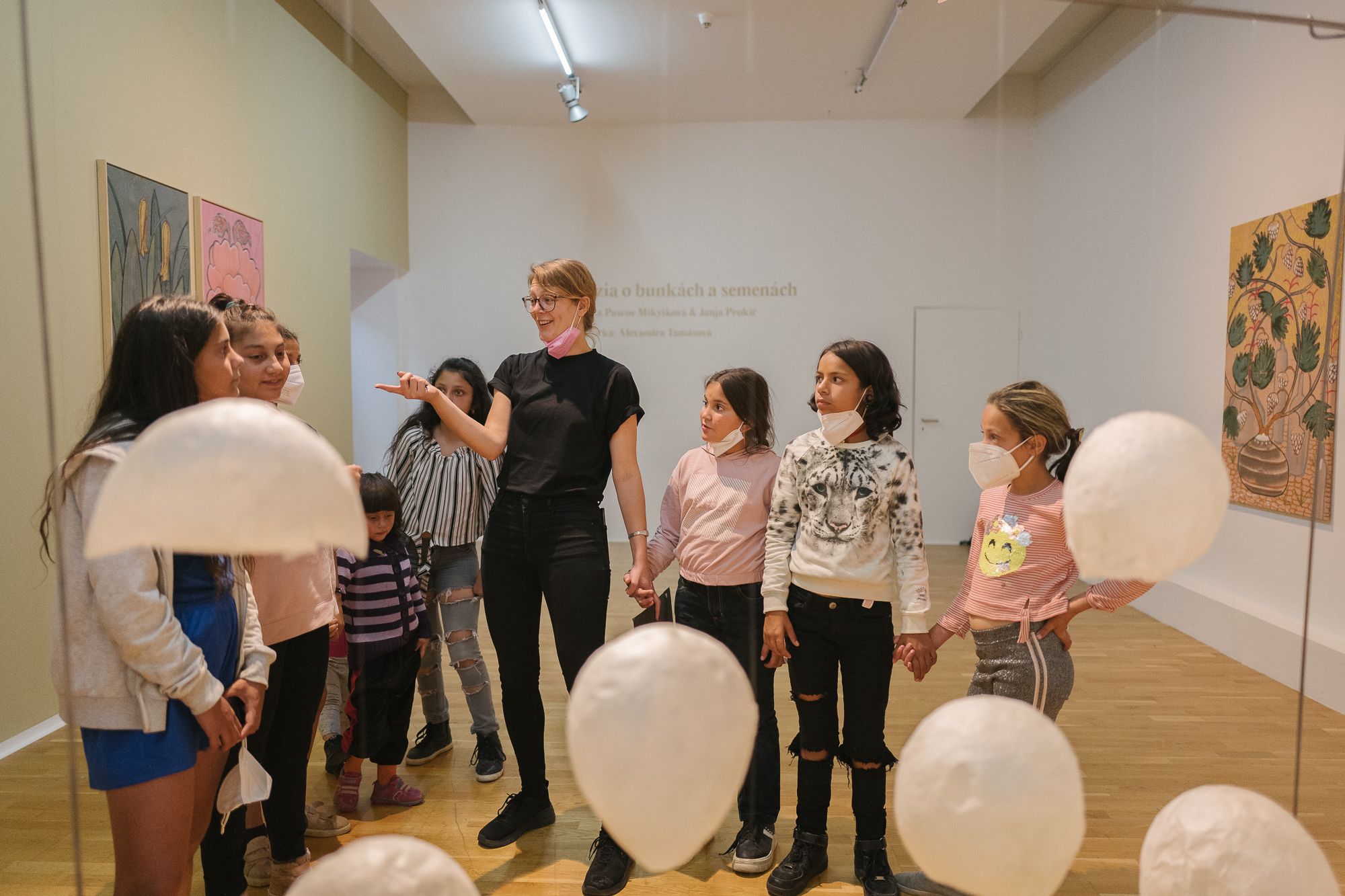
Visiting the exhibition Poetry on Cells and Seeds by artists Monika Pascoe Mikyšková and Janja Prokić, Petra Filipiaková, centre, Photo: Tibor Czitó
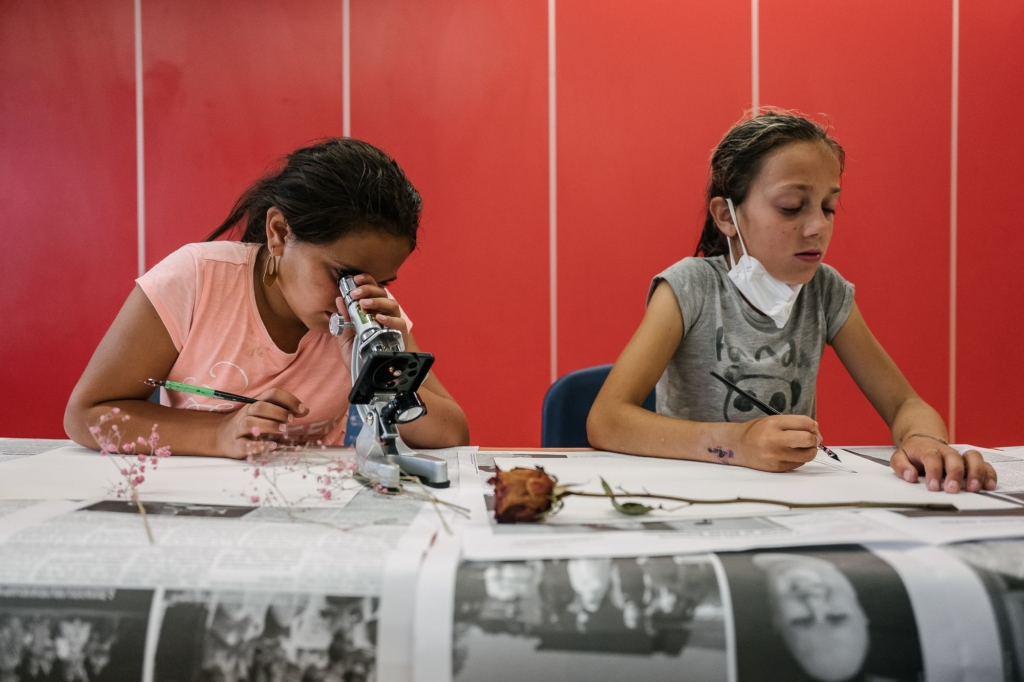
Children observed leaf and vegetable cells in creative workshops led by Petra Filipiakova. Photo: Tibor Czitó 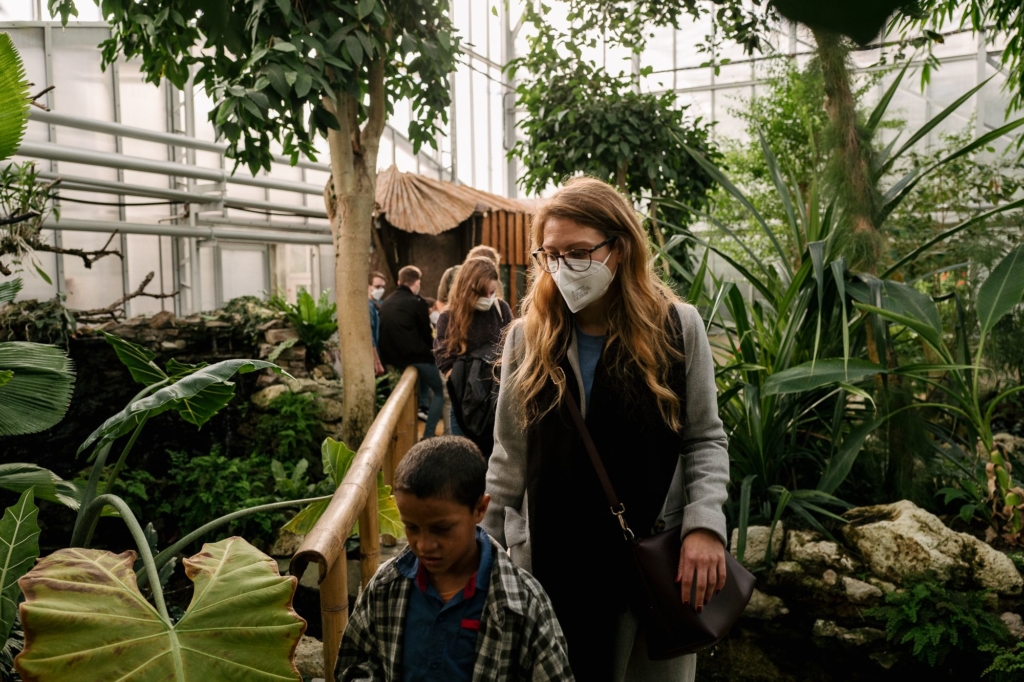
Petra Filipiaková and children on a tour of the Botanical Garden of the UPJŠ in Košice, Photo: Tibor Czitó 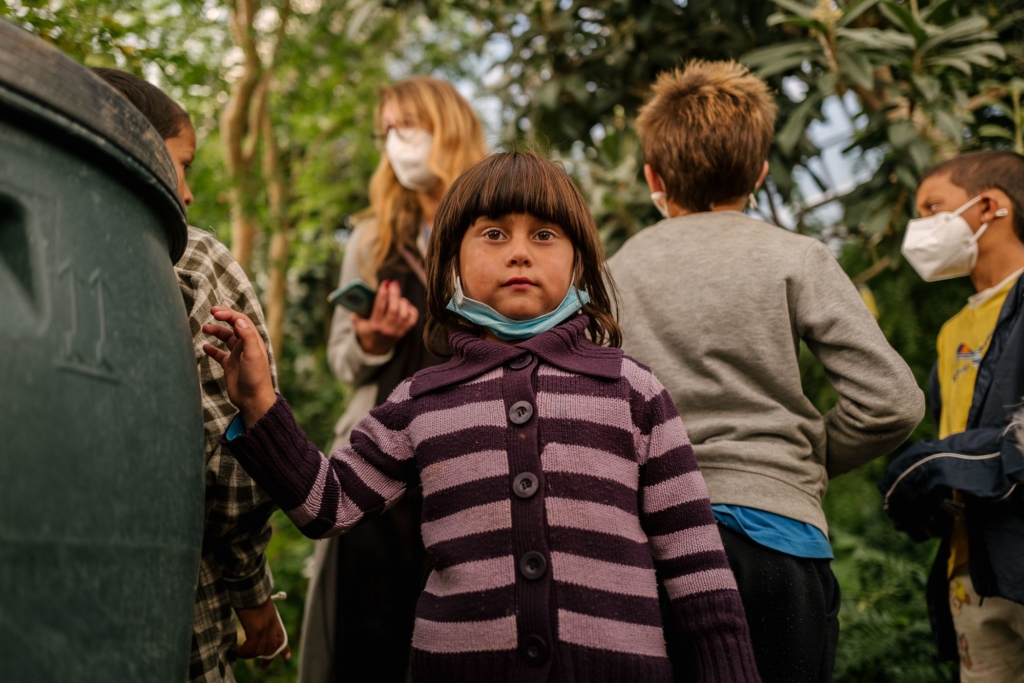
Children observed leaf and vegetable cells in creative workshops led by Petra Filipiakova. Photo: Tibor Czitó
What’s next?
„A couple of months ago, we presented the second sequel called Appropriation. We plan to develop the project on two levels in the future. The first is the level of design, where we will try to apply the resulting prints to products and sell them, with the profit from the sales going towards further development of the project and its workshops. The second level of the project focuses on workshops for children to further educate children and help their development,” says designer Zuzana Zmateková about the project’s future.
Curator Monika Pádejová is working on the concept of the next exhibition, where the project will present its second collection. „The next exhibition in Rimavská Sobota, which I am preparing with Petra Filipiaková, will follow the first exhibition in the East Slovak Gallery. We will present the second collection, titled Appropriation, and prints from the previous collection will also appear there.”
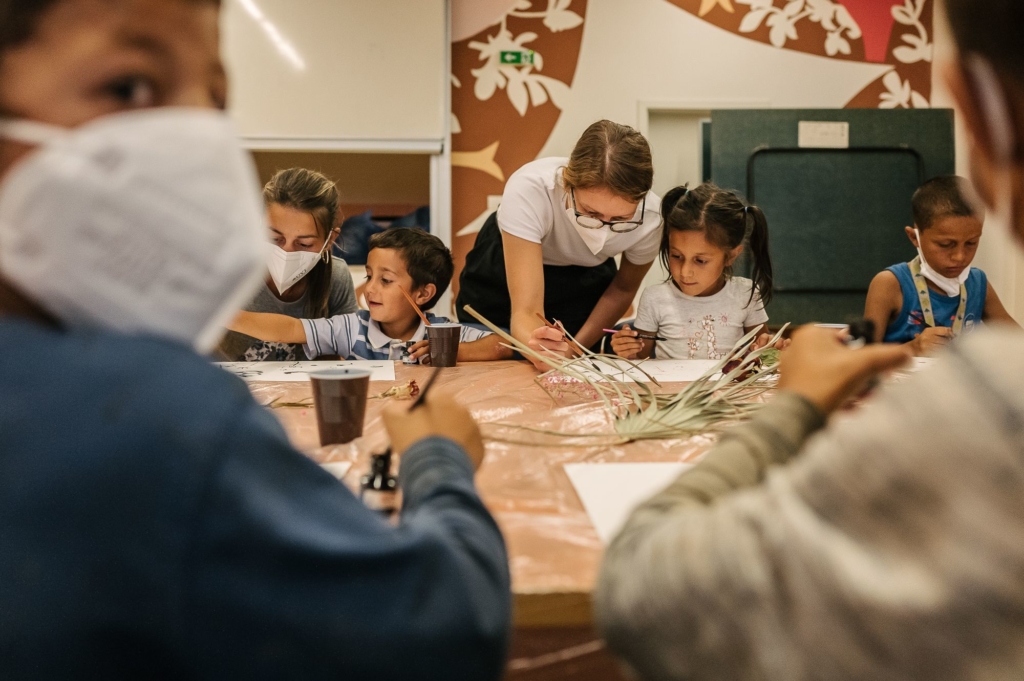
Photo: Tibor Czitó 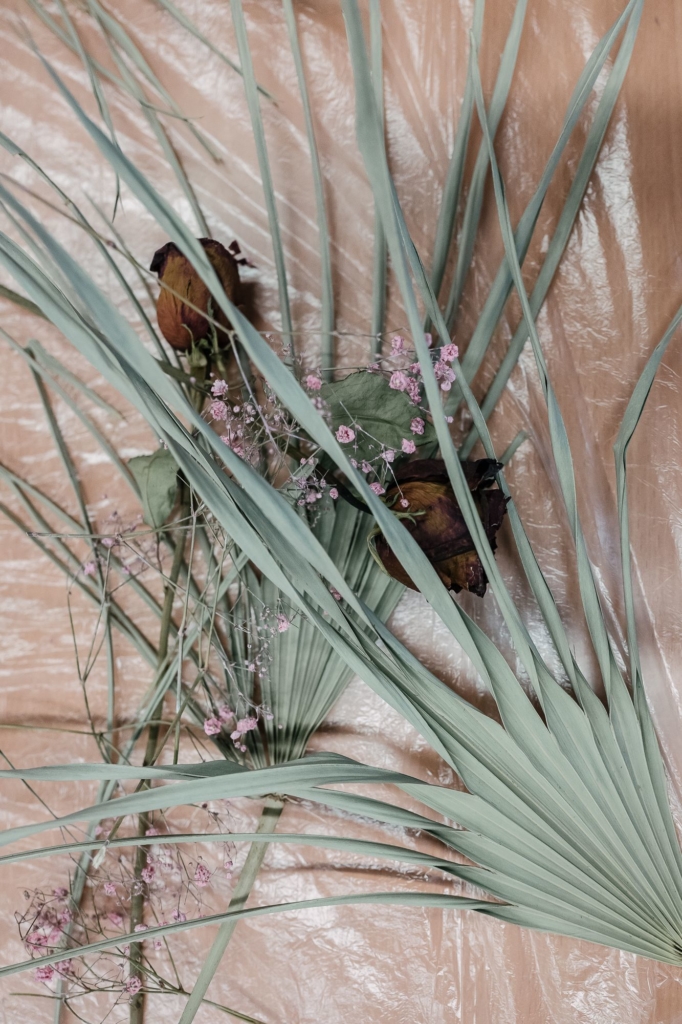
Photo: Tibor Czitó 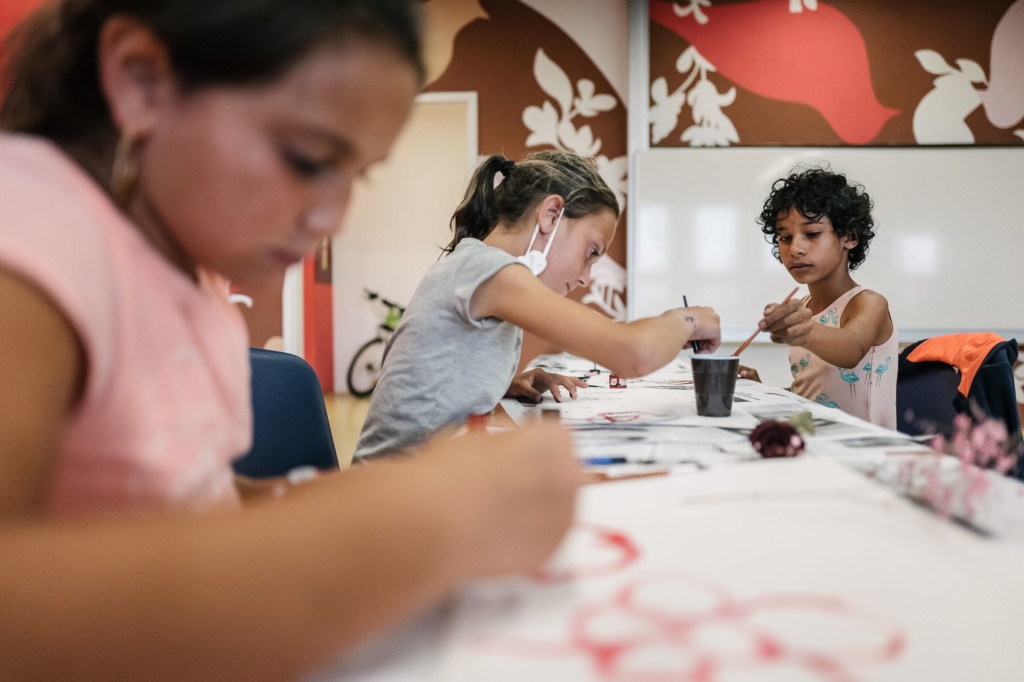
Workshop in the community centre in Lunik IX., Photo: Tibor Czitó
What is the sustainability of participatory projects?
„Funding is a fundamental problem for such projects,” curator Monika Pádejová and designer Zuzana Zmatek agree. According to Zuzana, this also directly correlates with the fact that people do not develop these types of projects further. „Even for the artists themselves, it’s hard to make a living somehow and at the same time fully volunteer for the project.”
„Within Amenge, we are looking for a way to ensure that the whole effort doesn’t end up as just a ‘project for the sake of a project’, but has a deeper background in an educational and inclusive direction,” the curator adds.
Responses to the project
Participatory projects open discussions and generate interest among professionals and the wider public. The Amenge project was also awarded the National Design Award 2021 in the Society & Environment category. „The project exceeded our expectations, attracting much more attention among the general and professional public than anticipated. In this respect, I think it fulfilled its goals and presented the contemporary aesthetics of Roma children and youth in a new light, free from stereotypes, and thus contributed to building a positive image of contemporary Roma culture,” says Zuzana Zmateková.
„I consider the public’s interest in the project itself and its outputs – exhibitions or textiles – to be a positive impact. Also, the willingness and openness of people, at least in my neighbourhood, to discuss Roma culture, which pleasantly surprised me.” – Monika Pádejová adds.
A recording of the Interdisciplinary Online Lab on Inclusive Culture:
